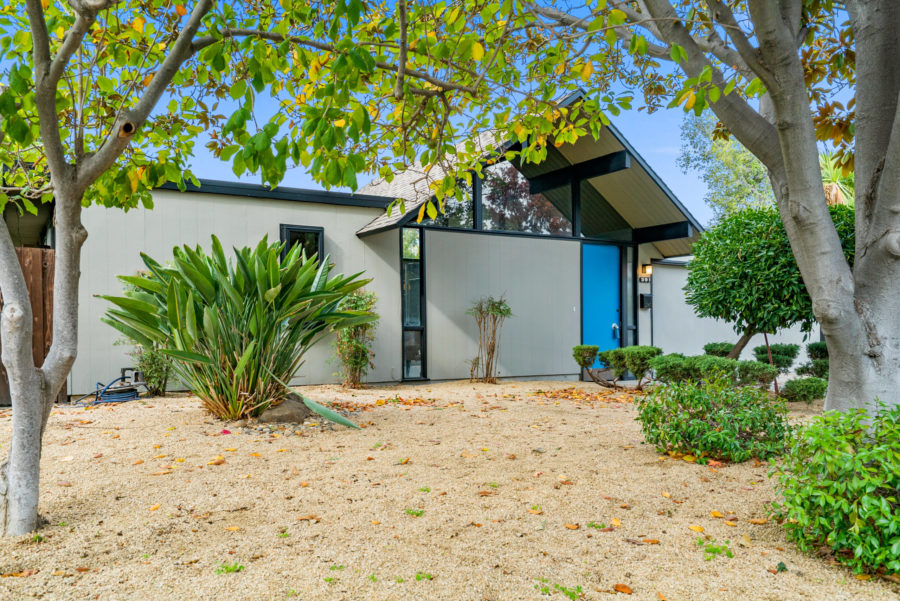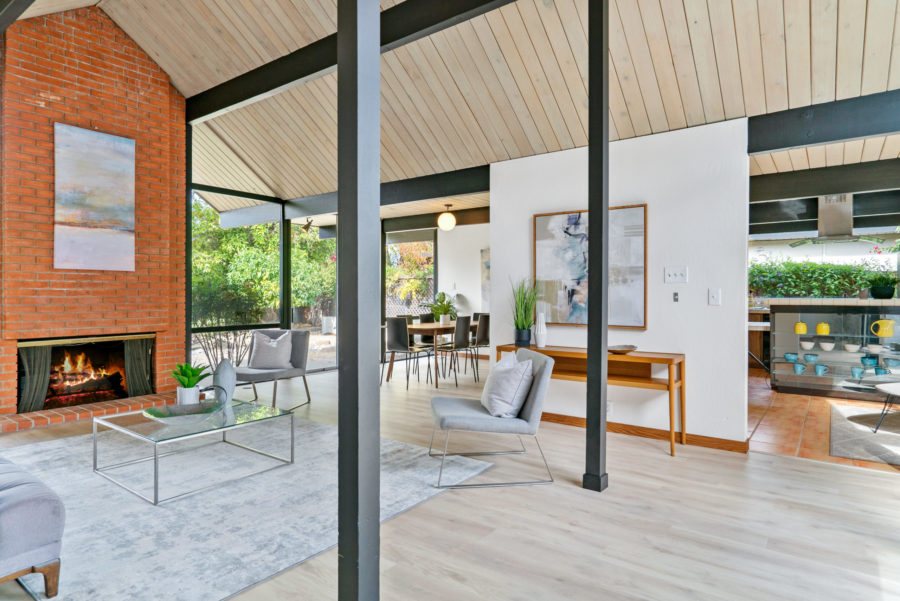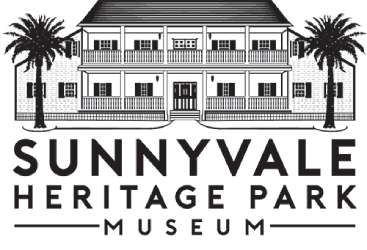Before I started my research for this article, I had no idea how many Eichlers there are in Sunnyvale, or that the very first one was, in fact, constructed in our city! – Did you know that Sunnyvale boasts 1,100 Eichler homes?
When my friend told me she had “moved into an Eichler home”, I was nonplussed – “An Eichler….?”. She enlightened me about the famous building style and explained the design elements to me, but I had yet to find out how important this radical new style had been back in the mid-1900s and how it became a distinct style of “Mid-Century Modern”.
Joseph Eichler was not even an architect or a designer. He just happened to have the vision for creating affordable, yet stylish homes for the American middle class in a strikingly modern design. Born in 1900 to Jewish immigrants from Austria and Germany, Joe grew up in New York City. He earned a business degree in 1920 and held several unsatisfactory jobs as assistant to investment advisors. In 1925, Joe married and the Eichlers moved to the San Francisco Bay Area where he worked for the wholesale butter and egg business run by his wife’s family. Twenty years and two children later, Joe found himself wondering what to do next after the family company had been sold. For a short time, the Eichler family had lived in a home designed by Frank Lloyd Wright, and the style inspired Joe. He was wondering if “such houses could be built for ordinary people”. The couple bought a lot and hired architect Robert Anshen to design a house for Eichler’s family using style elements made famous by Wright.
Although the Eichlers’ own Anshen-designed house wasn’t built until 1951, the paths of the two men crossed again in a professional capacity. At age forty-five, Joe invested in the enterprise of two young engineers who sold pre-fab houses in Sunnyvale. In short order, he bought them out and engaged in the building business himself. Anshen’s suggestion to build modern houses together rekindled Joe’s earlier ambition, and in 1949, the company “Eichler Homes” was born.
With soldiers returning from WWII, the 1940s saw a massive housing shortage. The Veterans Administration promised homes to veterans without any down payment, and the Housing Act of 1949 started a building boom. Suburbia, previously an escape for wealthy families from the bustle of the cities, became a haven for middle class living. While Sunnyvale was not a planned suburban development but rather grew organically as an agricultural and industrial city, it had to absorb a growing population in post-war decades and looked to easy-to-build architecture to meet this need.
Joe Eichler and Robert Anshen were part of the answer to this need. They proceeded to build their first “Eichlers”, Sunnyvale Manor I, at East Maude and North Bay View, in 1949, followed by Sunnymount with 36 houses. This was the beginning of a long and prosperous relationship of builder and architect and the establishment of affordable modern homes in the Bay Area. Common style elements of a typical Eichler home include open floor plans in which the kitchen adjoins the living space, and visible post-and-beam construction with paneling in Philippine mahogany throughout the house. Large expanses of glass – either as panels, windows, or sliding doors, as well as skylights – flood the spaces with light and “bring the outdoors in”. Adding to that feeling are open-air courtyards and atriums. The concrete floors integrate radiant heating. Street-facing walls have very few or no windows at all, which was an unusual design for the time. Instead, the homes open up to the fenced-in back yard to connect to the landscaping and patios. The roofs are flat or A-frames with a low slope.
With his Eichler Homes, Joe achieved his goal of bringing modernist homes to the working middle class. Not only did he exhibit forward thinking in his building style, Eichler also established a non-discrimination policy, selling homes to citizens of any religion or race. When the National Association of Home Builders refused to support this policy, he resigned from the association in 1958. Eichler developments often featured communal spaces with swimming pools, tennis courts (as in the Fairbrae tract), and community centers and were laid out to encourage neighborhood interaction. The look of individual houses was varied by simple design changes, such as placing the entrance and garage at different ends or the angling of houses on their lots.
More than 11,000 Eichler homes were built throughout California, most in the Bay Area, with several hundred in Southern California. After Palo Alto, with 2,700 Eichler homes, Sunnyvale is the city with the second-largest population of Eichlers, totaling 1,100 in sixteen tracts throughout the city. They make such an impact that the City of Sunnyvale approved guidelines for Eichler neighborhoods in order to support preservation and neighborhood cohesiveness. In the years between 2015 and 2017, residents in one Eichler tract after another petitioned the City of Sunnyvale to rezone their neighborhoods from low-density residential to low-density residential/single story. This trend was initiated through the intent by some homeowners who wanted to tear down their Eichlers and construct two-story homes on the same lot. They encountered stalwart resistance from their neighbors who appealed to the city not to allow “Monster homes” in the vicinity of their houses. Their issues were privacy, light, and preservation: one would have unimpeded views from second story windows of the newly built house next door through the glass walls of the Eichlers’ living rooms and master bedrooms. The taller houses would obstruct the influx of light into their houses and destroy the character of the neighborhood. “I believe you should have your property rights. I also believe there’s something called property responsibility,” said one of the petitioners. “People need to understand you have a responsibility when you move into an Eichler community… This is a really historic area.” In some cases, the fury of the Eichler preservationists caused rifts between neighbors when things became personal. Some applications for two-story homes were granted, but eventually, the petitioners were winning their case and gaining support from the city planners who created new guidelines and zoning.
Joseph Eichler certainly found the right region for his innovative designs: today, Eichler homes in the Bay Area are trending more than ever. The homes selling originally for $9,500 are now fetching top dollar. Today’s Eichler home owners are Eichler devotees who conduct tasteful remodels in keeping with the style of the house while adjusting to the lifestyle of the 21st century by enlarging previously modestly-sized kitchens and adding another bathroom. Furniture is chosen carefully to fit within the interior design, new elements are added to accentuate the character of the architecture, specifically with the choice of color: you often see an anthracite or dark blue house with a striking orange or bright green front door. – But what would Joe say to the idea that his modestly priced homes for vets and medium income families are now attainable only for the affluent employees of today’s tech companies!
I would like to thank Jumé Irmscher from Atria Real Estate for her gracious assistance with providing informational materials and the stunning photographs accompanying this article.
By Katharina Woodman
Sources:
Atria Real Estate
Paul Adamson, Marty Arbunich, Ernie Braun; Eichler – Modernism Rebuilds the American Dream
Jerry Ditto, Lanning Stern, Marvin Wax; Design for Living: Eichler Homes
San José Mercury News/Bay Area Newsgroup articles by Victoria Kezra, Anne Gelhaus, Richard Scheinin



